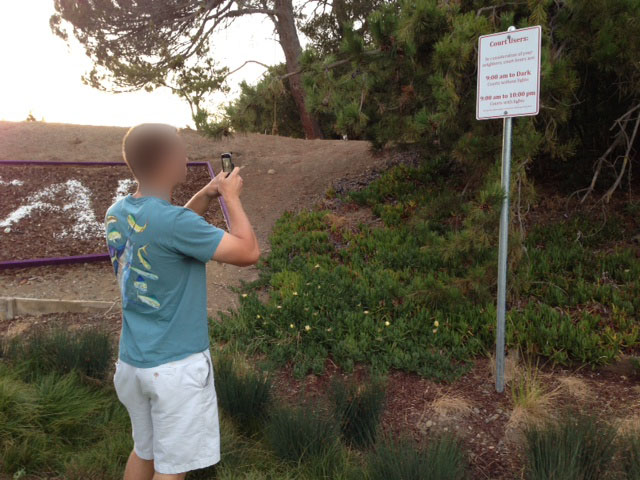Assignment 2, Example 2
Activity and Design Brief
My design brief is focused on storytelling. Specifically, I chose to observe how people share their "stories" when they are remotely sharing content with their friends through social media sites, texting, and other similar forms of communication. I found people who were either in the process sharing content, or in a situation where they might share content. I then observed how they executed the process, and proceeded to interview them on their experiences. With the current trend in social media, people are always sharing with their friends, and I want to explore these methods and search for potential needs. For example, when I want to share an Internet article with a close group of friends, do I post it as my Facebook status, send an email to my friends, or tweet it? These new ways of sharing content are currently evolving, and I am very interested in pursuing need-finding in this area.
Observations
First Person: "Ethan"
Activity: Taking a picture on his mobile phone of an interesting sign and tweeting it.
Here Ethan is taking the picture:
Here Ethan is tweeting the picture he just took.
Ethan uses Twitter as his primary way to share content with his friends. He said he will occasionally post on Facebook or text a friend if he wants to share content with a specific friend. However, in most cases, he chooses to share content by tweeting on his private Twitter account (which only those who follow him - mostly his close friends - can see). He finds that mobile uploads to Twitter work pretty well, and he can execute a picture and tweet in a matter of seconds. Ethan made sure to emphasize that his Twitter account is private, so only a select group of friends can see what he tweets.
Second Person: "Chris"
Activity: Viewing his friends' pictures on Instagram
Below is a picture of Chris accessing his Instagram account on his phone:
Chris does not have a Twitter, and rarely posts to Facebook. Instead, his primary methods of sharing content are through Instagram (for pictures), and through text messages. Although he was using Instagram when I approached him, I learned during the interview that he mainly shares content via a group-text thread he has established with his close friends. Chris likes using group texting because he knows exactly who he is sharing with (a designated group of his close friends), and he can share anything that comes to mind, without worrying that the "wrong eyes" will see what he shares.
Third Person: "David"
Activity: One on one texting.
Here David is texting a single friend:
I approached David when he was texting a friend. Texting is very common, but I interviewed David to get a sense of why he was choosing to text, rather than use another form of social media or communication. He told me that he has a Facebook account, but rarely (if ever) posts statuses. In addition, he does not have a Twitter. The reason, he says, is because he feels those forms of communication are impersonal. He was very adamant in saying that if he wants somebody to know something, he will contact them directly, and them only. He feels that posting things on Facebook or Twitter (for the more-public eye) is unnecessary. "If I want to tell somebody something, I will tell them directly," were essentially his words. As a result, texting is his primary method of communication, because he specifies exactly who he is sharing with. He also said he was very satisfied with the texting service on his iPhone, and said that even pictures can be texted really easily.
User Needs
- It was important to all three of these people that they knew exactly who they were sharing content with.
- Although most people have Facebook accounts, it seems that people are sharing less because the audience is not exactly who they want to share with.
- Many people have hundreds of friends on Facebook whom they barely know, and this causes people to share less on Facebook.
- Both Ethan and Chris had ways of sharing with a select group of friends (Ethan through his private Twitter account, and Chris through his group-text thread). What if they want to share with different groups of friends based on the content of what's being shared.
- Different types of content will be shared with different groups of people. There should be a seamless way to do this. Right now, Ethan and Chris only have one select group they can broadcast to, but don't have a good way of broadcasting to a specific subset of that group, or even a different group of friends entirely.
- Ethan, Chris, and David all primary share using their mobile devices. There is not a good, popular way to share url's (such as online articles, etc) via mobile devices.
- It would be interesting to have a better way to discover online content (such as a Reddit or Stumbleupon) on a mobile device, and moreover to be able to share the content that you discover.
- Right now, a single group text can only have one big discussion. What if the Davide group could have two simultaneous forums of discussion (in other words, two threads open at once)?
- When tweeting his picture, Ethan had to make a few clicks to complete the process. What if there was a one-click option to snap a quick picture and share, all in one click?
- People need a way of documenting events that occur with friends. We all can go home in write in our journals, but what if there was a way to document your experiences with your closest friends. This mobile application could always instantly add pictures and comments to capture and remember the best times you have with friends.
- Have an iPhone app that allows people to share content with each other only if they are physically close to each other. In this way, people can document their favorite experiences with the people they love.
- Find the right size of a group of people to share with (perhaps it's different for every person)
- Allow for texts and pictures on group texts to be saved in a more permanent fashion, rather than just in the message history.
- Have a better way to share with different circles of friends on Facebook, rather than broadcasting to all of your friends
- Allow for text-style messaging even if the two people don't have each other's phone numbers (but, say, are friends on Facebook)



